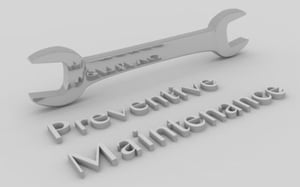 In times of uncertainty, it is best to focus on the things we can control. So as organizations face a slowdown in incoming orders or employee absenteeism, now is the time to address those nagging equipment issues. Companies can stay productive and have confidence that when things get back to normal, they will be ready since they’ve used this time to complete equipment overhauls / preventative maintenance projects. As with any project, following a structured procedure is key. Follow the steps below to ensure an efficient and productive project.
In times of uncertainty, it is best to focus on the things we can control. So as organizations face a slowdown in incoming orders or employee absenteeism, now is the time to address those nagging equipment issues. Companies can stay productive and have confidence that when things get back to normal, they will be ready since they’ve used this time to complete equipment overhauls / preventative maintenance projects. As with any project, following a structured procedure is key. Follow the steps below to ensure an efficient and productive project.
1. Scope
What machinery is the most critical? What machinery has had the lowest OEE (Overall Equipment Effectiveness) over the last quarter? Go back through old PM (Preventative Maintenance) sheets or work orders to determine where your time is best spent. Answers to questions on timeline, affected equipment/departments, and budget need to be finalized here before the planning can take place. A clearly defined scope is paramount in avoiding scope creep.
2. Planning & Preparation
The planning/preparing step of any project is always the most important step but often it is overlooked or hurried through. There are several areas to consider in this step; below are just a few:
- Manpower: How many workers do you need? Do they have the necessary skills?
- Resources: What tools, equipment, or third-party resources are needed?
- Logistics: Will you have what you need, when you need it?
- Materials: Are raw materials or spare parts on hand?
- Safety: Have all hazards been identified? Are workers aware of those hazards?
The more time you spend working through these areas the less likely you will be surprised when the work gets started. Murphy’s Law says that anything that can go wrong will go wrong, so it’s best to always have contingency plans ready for when roadblocks arise.
3. Execution
Now that you have planned the work, it’s now time to work the plan. Don’t be surprised if unforeseen issues / complications come up during the work. If you’ve spent adequate time preparing, these should be minimal. Once work wraps up be sure to conduct a final inspection before handing off any equipment.
4. Startup/Evaluation
Once final inspections are complete, and the project lead has signed off you can begin to bring the equipment back online. Start slow and check for part fitment, new/concerning noises, or vibrations. It’s always best to have a representative from operations present since they tend to spend the most time around the equipment. When everyone is satisfied with the operation, take time to bring the team together to capture successes and opportunities to improve, and always document those for consideration in future projects.




